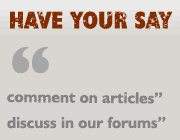Oil Coating Machinery
Most dry-expanded feed operations apply liquid fat and/or flavors after drying, cooling, and sizing to enhance the acceptability and palatability of their products. Where it is preferred that the drying and cooling modes be accomplished in separate pieces of equipment, these feedstuffs often are coated after drying but prior to cooling. This choice has the advantage of coating a warm product which improves absorption. Liquid fats and flavors are normally applied in revolving cylindrical reels by spraying a mist of liquid or sprinkling a dry powder over the product as it enters the rotating reel. The reels are heated to keep the fat from solidifying on the inner surface of the reel. Fat heating tanks, used as a surge for the fat addition system, normally have the capability of preheating the fat to 60°C which is the recommended temperature. A metering device is used to meter the dry pet food into the rotating applicator reel to ensure that an accurate level of dry material is mixed with the added fat. When fat is added at percentages between one and five percent, a misting nozzle is normally used inside the fat coating reel. When applying higher percentages, a flood type nozzle is used.
Another coating device cascades the dry product through a “curtain” of liquid coating created by a spinning disc assembly. This eliminates the need for spray nozzles. Recently, high speed mixing machines have been utilized to uniformly apply liquids to pet foods. These machines load and discharge their contents rapidly to actually convert a batch process to a continuous-batch system. Liquids are “slugged” into the mixer and depend upon the tremendous particle movement to wipe it from particle to particle. Typical cycle times per batch are 5 to 30 seconds.
Vacuum infusion coating systems have several process benefits over atmospheric systems, such as up to a 40 percent liquid addition and the infusion of coatings into the pellet cell structure. Vacuum infusion draws coating liquids into all air cells within the extruded product while atmospheric processes result only in topical coating of the feed.



